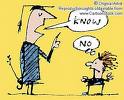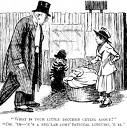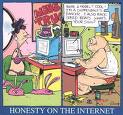Psychology Humor
Evolution of concept of sense of humor:
The concept of sense of humor came into existence over past two centuries. It was initially developed by British developer to judge the quality of a person or certain things during the 18th and 19th centuries. During the 18th century the sense of humor was called as the sense of ridiculous. Only after nineteenth century it was named as sense of humor
The sense of humor is associated wit humor taking the positive connotations. If some one acquired the sense of humor then he/she is judged as the person having positive character. The sense of humor must the most important character that each individual should posses in themselves. It is the ability to make others laugh or enjoyment of amusement. If someone lacks sense of humor than they are serious, egoistic, extremist.
Forms of humor:
The humors are broadly classified into three categories
- Psychological Jokes
- Spontaneous conversational humor
- Unintentional humor
Jokes:
It is the prepackaged humorous anecdotes which peoples memorize and pass it to one another. When people do normal conversation, some peoples like to amuse others by cracking jokes. This is referred to as Canned jokes.
The joke usually consists of a setup and the punch line or dialogue. The setup line is the last sentence that a listener expects about the situation in advance. The punch line is something that comes out from the mouth spontaneously thus creating the nonserious incongruity that makes the humor to occur.
Spontaneous conversational humor:

The above canned jokes are only the small portion of the humor that we experience in our day today social life interactions. The spontaneous conversational humor are of different forms and it is described in different words namely
- Anecdotes
- Wordplay
- Irony
Anecdotes:
It is the way of creating humor related to some story of oneself.
Wordplay:
It is the way of creating humor like witty response, wisecracks, etc..,
Irony:
It is the statement in which the literal meaning is different from the intended meaning.
Unintentional humor:

Unintentional humor is the way of making other group laugh without actually meaning. There are several different kinds of unintentional humor that arise out of various situations.
- Unintended contradiction
- Misstep
- Taking one's creation too seriously
Computational approach to humor:

Computational humor is a branch of computational linguistics and which uses computers in humor research. It should not be confused with computer humor (i.e., jokes about computer or computing).
Laughter and the Brain:
It was studied from the patients that there are two separate way in the brain that can lead to the smiling and laughter. The smiling is the voluntary and the laughter is unemotional. Some patients those who have suffered from stroke, they have problem in their brain and cant able to do any facial expressions like smiling.
Much evidence has shown that the different brain circuits are involved in both the voluntary and emotional forms of laughter and smiling.
The developmental psychology of humor:
Most developmental researchers have resulted that humor is reflected in the child's ability to perceive incongruity, a discrepancy between what is usual or expected and what is experienced.
Children's first jokes starts when they call others by the wrong name or pointing to the ear and says it as nose, it starts at the age of two. Children's humor becomes much complex at the age of three.
Now it is enough to call a dog as cat because it is increase the knowledge about the environment. Likewise the psychology of humor gets developed in the children.







